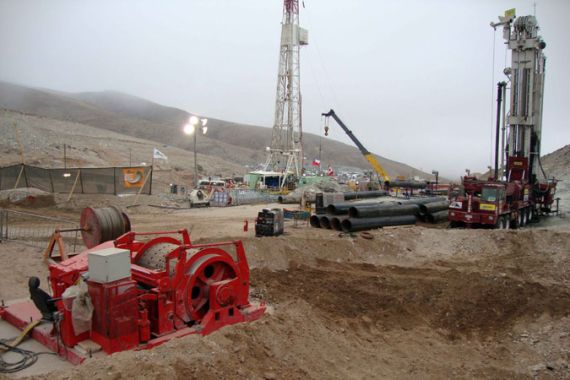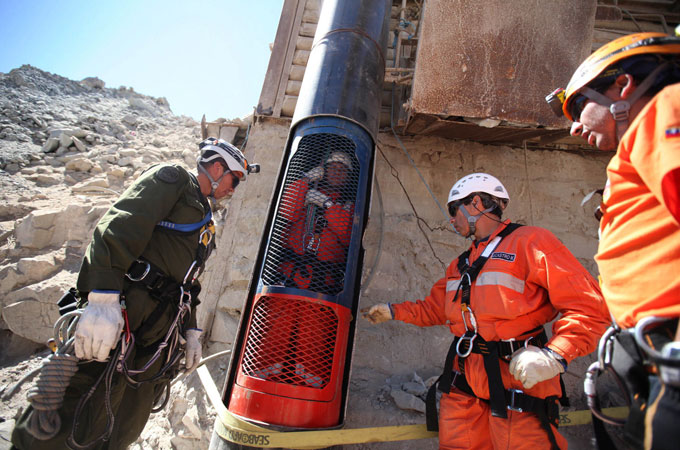Q&A: Chile mine rescue
Details about efforts to rescue 33 workers trapped in mine for more than two months.

 |
| Rescuers successfully tested a rescue capsule that will be used to winch up the 33 trapped miners [EPA] |
Chilean rescuers are working to winch up 33 workers who have been trapped underground in the copper-gold mine for nearly 70 days.
Family and friends have gathered at the site as rescuers completed final checks to pull out the men. Below is a brief summary of the incident and the government’s rescue campaign.
Keep reading
list of 4 itemsEurope pledges to boost aid to Sudan on unwelcome war anniversary
Birth, death, escape: Three women’s struggle through Sudan’s war
Mapping Israel-Lebanon cross-border attacks
What happened?
A shaft at the San Jose gold-copper mine collapsed some 300 metres below the surface, trapping 33 men near Copiapo, about 800km north of the Chilean capital of Santiago. The incident on August 5 prompted a rescue operation that is already into its third month.
Family and friends of the trapped miners have since been camping out on an arid, rocky hillside near the mine, in a tent settlement dubbed “Camp Hope”.
What are the rescuers doing?
Engineers have finished installing 15 steel tubes to secure the top of the rescue shaft and build a platform above it to support the rescue capsule, which is a special metal cage.
Earlier, officials mapped out three rescue plans which involved boring tunnels down to different depths. Rescue workers have already drilled a 66 centimetre-wide shaft through which the men will be pulled out one at a time. The supply chute was then enlarged to a diameter of 30 centimetres.
How are the trapped miners?
Despite surviving underground for a period longer than anyone ever has in similar mining accidents, the 33 men are reportedly in good health except for minor skin infections. Cameras lowered through small bore holes revealed images of the workers, often bare-chested because of the stifling heat, and their shelter lit mainly by the lamps on their hard-hats.
Rescuers have been dropping supplies via a pipeline, with the men keeping in touch with their families through video-conferencing.
How will the rescue be done?
Each worker will be winched up the rescue shaft, equipped with a helmet, gloves, water, food and oxygen. Each trip could take up to 90 minutes. Upon reaching the surface, each men will undergo medical examination and time to readjust to normal life. They will also be given special sunglasses to prevent any harm to their eyes from bright light.
Given the small diameter of the borehole, each miner will have to have a waistline of no more than 90 centimetres to be hauled up to safety. In order to ensure they are the correct size the men have been ordered to do 20 minutes of aerobic exercise a day to prevent muscle cramps on the way up.
Will the men suffer medical complications?
Doctors and psychologists deployed to the site have warned of possible physical and psychological effects of prolonged isolation deep underground. Nasa consultants had suggested that the miners be given extra doses of vitamin D to compensate for the lack of sunlight. Fluorescent lights with timers had also been sent down to keep the men on a normal schedule.